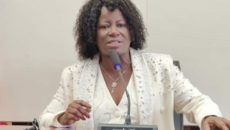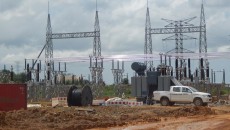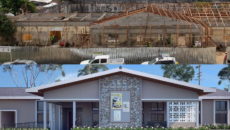Earlier this year, researchers from UC Berkeley and Lawrence Berkeley National Laboratory released a study identifying and validating renewable electricity resources (wind and solar) for 21 countries across eastern and southern Africa.
They found that many African countries in these regions have renewable energy potential that far exceeds their projected demand. So much so that the study’s lead author said that “the wind and solar resources in Africa are absolutely gigantic.†They concluded that strategic siting and regional grid interconnections are crucial in developing competitive renewable energy across a vast swath of the African continent.
As Africa continues to grow and develop, the demand for energy is expected to increase accordingly. In fact, BP projects Africa’s energy consumption to increase by 88 percent by 2035, dramatically faster than the rest of the world which is expected to grow by an average of 34 percent.
At the same time, Africa’s energy production is expected to grow by 39 percent. Meanwhile, its carbon emissions are expected to grow by 70 percent, which, again, is much higher than the global average which is projected to be 20 percent.
Currently, Africa’s energy profile is largely based on traditional, fossil fuel resources such as oil (40 percent), gas (27 percent), and coal (18 percent).
Africa is rich in natural resources, including all the above. It exports 45 percent of its energy production; however, with demand growing domestically, and by a significant amount, exports are expected to fall to 25 percent by 2035 to keep up with domestic demand.
Oil, gas, and coal production, and in some areas, hydroelectric, are the traditional electro-generation choice in Africa. Decision makers in Africa are looking to these familiar resources as a means of meeting future energy goals. Instability and high costs in the fossil fuel market have shifted planning toward hydropower — and it too has its drawbacks including climate vulnerability, transboundary water rights, international cooperation barriers, cost overruns, and socio-environmental impacts.
Renewal energy resources are dismissed by many as being too erratic and undependable, and costs are always a concern.
Whether considering fossil fuels or hydropower, the study’s researchers worry that this reliance on the familiar might push out the eco-friendlier, and cleaner, renewable energy options. These options include solar power (solar photovoltaic and concentrating solar power) and wind power.
The researchers examined the Eastern and Southern Africa Power Pools, identifying the solar and wind resources throughout. They found that many countries have significant wind or solar energy potential many times their projected demand. However, wind and sunshine tend to be spatially uneven, making it necessary to plan strategically.
For example, they found that most countries studied had one or two orders of magnitude more high quality (renewable) resources available than their expected 2030 demand. A handful of countries (Angola, Burundi, Democratic Republic of Congo, and Rwanda) lacked sufficient quantities; however, their neighbors, Namibia, Tanzania, and Zambia, all have an excess of wind resources.
The researchers recommend strategic siting, cooperation, and an interconnected grid to ensure low-cost, low-impact, and highly accessible renewable energy resources across these regions. As they stated in the study, “Our results show that wind and solar electricity can be cost competitive and have a much larger role to play in Africa’s energy transition, especially if the benefits of strategic siting and international interconnections are considered.â€
Africa is growing up — fast. We have two choices:
- Keep the status quo by scaling traditional energy resources but with an undesirable environmental cost such as poor air quality and excessive CO2 emissions, cost overruns, and instability.
- Leverage renewable solar and wind resources found across Africa to provide more than enough clean energy for African countries and neighboring ones lacking adequate resources with competitive costs and cooperation.
It’s an easy choice. Now, we need the powers that be to embrace nature’s bounty and work together to harness it.
Featured photo courtesy of West Coast Energy



